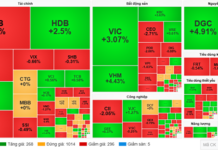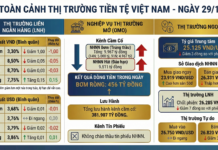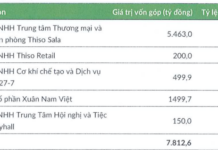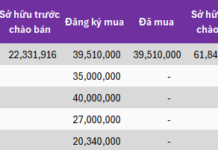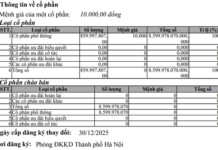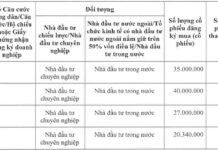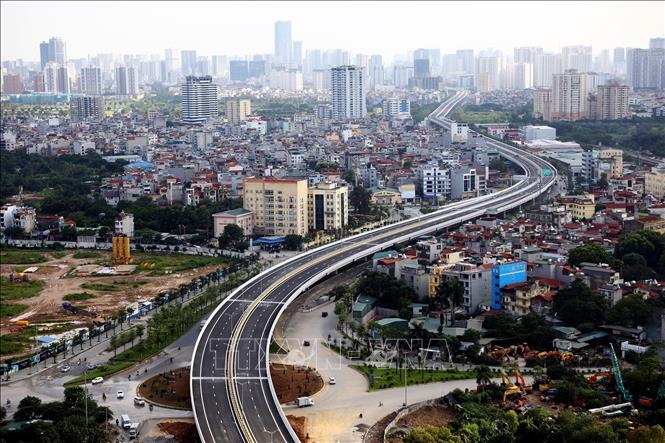
Vietnam’s socio-economic development plan for 2025 is crafted amidst a backdrop of rapid and unpredictable global changes.
According to the directive, the socio-economic development plan for 2025 is formulated amidst a rapidly evolving and unpredictable global context. While cooperation and development remain the overarching trends, strategic competition, protectionism, new alliance formations, trade wars, supply chain disruptions, economic sanctions, and a race in science and technology are on the rise. The global economy is facing slow growth and multiple risks and challenges.
2025 is a particularly important year for Vietnam as it marks the final year of the 2021-2025 Socio-Economic Development Plan. It also coincides with the organization of Party Congresses at all levels, leading up to the 14th National Party Congress. After nearly four decades of reform, the country’s strength has grown significantly in terms of scale and competitiveness. Political and social stability, macroeconomic resilience, and improved business environment have all contributed to enhancing Vietnam’s position and reputation on the world stage. However, significant challenges remain, especially in fulfilling the goals set forth in the 2021-2025 Socio-Economic Development Plan.
Given the complex international and domestic landscape, ministries, central agencies, and local authorities are tasked with identifying the fundamental issues of the 2025 Socio-Economic Development Plan. This includes focusing on the following key aspects:
Context and Challenges: Analyzing domestic, regional, and international opportunities, advantages, challenges, and risks that could impact the formulation and implementation of socio-economic development goals. Particular attention should be given to issues such as the Russia-Ukraine conflict, the situation in the Gaza Strip and the Red Sea, protectionism, new global alliances, inflation, policy adjustments by major economies, commodity price fluctuations, shifts in capital flows and global supply chains, digital and green transformation trends, and non-traditional security issues like pandemics, natural disasters, climate change, water security, and cybersecurity.
Overall Objective: Clearly defining the overarching goal of the 2025 Socio-Economic Development Plan, aligning with the country’s long-term vision and strategic priorities.
Key Indicators and Balances: Proposing realistic key indicators that reflect the practical situation and predict the successful implementation of the 2021-2025 Socio-Economic Development Plan and the 2021-2030 Socio-Economic Development Strategy.
Orientations and Key Tasks: Suggesting orientations and tasks for 2025 that align with the overall objective while considering the practical conditions and development level of each sector and locality. This includes policy responsiveness, macroeconomic stability, infrastructure development, economic restructuring, human resource development, and the continuation of reforms in key areas such as public investment, state-owned enterprises, and credit institutions.
Emphasizing the need for concrete tasks, solutions, timelines, and quantifiable targets, the Prime Minister directs that the goals, orientations, and solutions proposed must closely follow the Party’s resolutions, effectively mobilize and utilize resources, promote public-private partnerships, and demonstrate self-reliance among agencies and units. The successful implementation of the 2021-2025 Socio-Economic Development Plan is a key priority.
Tasks and solutions should be specific in terms of content, timelines, and completion schedules, with clear identification of leading and coordinating units. They should also be quantifiable, such as the number of kilometers of expressways constructed, the number of streamlined administrative procedures, or the reduction in bureaucratic staff.
Domestic Revenue Projection: Aiming for a minimum increase of 5-7% in domestic revenue for 2025, excluding revenue from land use fees, lottery tickets, state capital divestment, dividends, profits after tax, and differences in revenue and expenditure of the State Bank.
Budget Allocation and Efficiency: Ensuring that budget allocation for 2025 adheres to legal regulations, approved criteria, and standards for capital investment and regular expenditures. Emphasizing budget restructuring in line with Resolution No. 07-NQ/TW, this includes streamlining public service delivery units, reducing regular expenditures, and improving efficiency in using resources for salary reforms and social security policies.
Adhering to the principles of transparency and anti-wastefulness, the directive calls for early identification of tasks, detailed budget allocation by December 31, and minimizing budget cancellations and carry-overs to the following year. Prioritizing essential tasks and avoiding new policies or projects without sufficient funding are crucial. Effective utilization of revenue from equitization and state capital divestment in enterprises is also emphasized.
Regarding investment for development, the directive underscores the importance of allocating capital investment plans for 2025 based on the capacity for implementation and disbursement, avoiding fragmented and inefficient allocation, and ensuring timely distribution of plans to relevant tasks and projects.
Local Budget Formulation: Localities are instructed to formulate their budget estimates for 2025, taking into account their socio-economic development goals, the national financial plan, and the medium-term public investment plan. They should also adhere to the Law on State Budget and relevant guidelines, ensuring sufficient resources for implementing central policies and local priorities.
Localities are expected to actively identify new sources of revenue and accurately assess the impact of various factors on budget estimates for 2025. They should also detail their budget estimates for different sectors, aligning them with their socio-economic development goals and ensuring sufficient funding for committed projects and policies.

